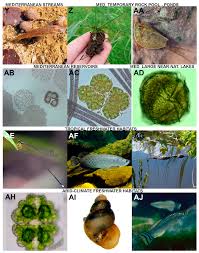Emphasis is being placed by many countries to improve the economic and environmental performance of the water system through providing economic incentives by taking into account the cost, value, price and demand for water in agriculture (Molle and Berkoff, 2007a).
Managing water as an economic good is an important way of achieving efficient and equitable use, and of encouraging conservation and protection of water resources‖ (Molle and Berkoff, 2007b).
Distinct Economic Features of Water
There are some distinctive economic features that make the supply and demand for water more complex than other economic goods and services, including (Hanemann, 2006; Thompson, 2006):
Private (extraction) and public good (stewardship) characteristics of water imply different allocation mechanisms.
When water is used on a farm it is a private good, but when left in situ, such as a lake or wetland, it is a public good for which private markets are generally absent.
Moreover, water is largely used by the private sector (farms, households, industry) but its ownership and delivery is normally in the public domain;
Mobility of water, in that it flows, leaches, evaporates, and has the opportunity to be reused, which makes it distinctive as a commodity compared to land, for example.
Moreover, agriculture can contribute positively to the hydrological cycle, for example, through groundwater recharge and water purification functions; it can, however, also contribute to surface water and groundwater pollution and through excessive extraction may lead to diversion of water from supporting ecosystems;
Heterogeneity of water in terms of space, quality and variability over time (seasonal and annual), which presents challenges in terms of matching supply and demand and structuring legal and institutional arrangements, as a given quantity of water is not the same as another available at a different location, point in time, quality and probability of occurrence;

Critical nature of water is evident in terms of sustaining human life and agricultural production, but beyond minimum thresholds to maintain life and farming this notion conveys no information on the productivity or value of water, for example, the marginal value of applying 80 or 90 cm of water to irrigate cotton; and, the
Complex and multi-layered institutional and governance arrangements for water resources, reflected in the national institutions and governance of water resources (and in some cases cross national border structures) and sub-national regional and local governments (water user associations) management of water, while the governance of surface water and groundwater are often separated.
Value and Cost of Water
Value of water, is the sum of the economic and intrinsic value. The economic value includes the:
Value to users of water for productive activities, such as irrigated farming;
Net benefits of returnflowsof water diverted for agriculture and other users, which may also include groundwater recharge, although thesebenefits will depend on the lost to evapotranspiration;
Net benefits from indirect use, such as drinking water for domestic purposes and providing habitat for flora and fauna, although these benefits can be offset by various negative environmental externalities, such as salinization of soils and pollution of water from farm chemicals used in irrigation; and,
Adjustment for social objectives and values, such as the additional increase in commodity production gained from irrigation, higher employment and benefits for rural development.
The intrinsic value of water is linked to the attributes of water that are the most difficult to assign values, for example, the aesthetics of waterscapes and recreational attributes.
Cost of water, consists of three elements:
Full supply cost
Full economic cost, and
The full cost:
The full supply costs are the costs associated with supplying water to consumers without considering either the externalities of water consumption (positive or negative) or alternate uses of water (opportunity costs).
These costs consist of two elements, which are also important in terms of measuring agricultural support for irrigation including:
Operation and maintenance costs,associated with daily running of the water supply system, such as electricity for pumping, labour and repair costs;
Capital costs, covering both capital for renewal investment of existing infrastructure and new capital investment costs, such as building a new dam and canal network.
The full economic costs are the sum of the supply costs, plus the:
Opportunity (or resource) costs,which address the cost of one consumer depriving another of the use of the water if that other use has a higher value for the water, although opportunity costs are zero when there is no alternate use, that is no shortage of water, while opportunity costs also apply to issues of environmental quality already discussed; and, the
Economic cost of externalities,consisting of positive externalities, for example the groundwater recharge benefits from irrigation; and negative externalities, typically upstream diversion of water or the release of pollutants downstream within an irrigation system.
The full costs are the sum of full supply and economic costs, plus environmental externalities. While economic externalities cover costs to producers and consumers upstream and downstream, environmental externalities are associated with costs to public health and ecosystems.
The economic value of water, however, covers goods and services that are not usually marketed, such as the net benefits from return water flows (e.g. groundwater recharge) and indirect use (e.g. wetlands or pollution); social values (e.g. rural employment); and intrinsic values (e.g. recreational, scenic, and cultural attributes).
While economists have tools to provide proxy values for these non-marketed goods and services (e.g. contingent valuation) there application to guide policy decisions can be difficult.
Cost of Supplying Water
The cost of supplying water has several distinctive features compared to other commodities:
Water is bulky and expensive to transport relative to its value per unit of weight, unlike electricity, where there is usually a national grid;
There are significant economies of scale in water supply, such as the use of a dam to store surface water, while the physical capital in the water industry is typically long lived, for example, irrigation canals; and,
Water supply projects are usually designed to meet multiple needs (e.g. agriculture, hydroelectric power, urban use), which makes defining the marginal benefit very difficult, as in many uses an additional unit of water may have little value at certain times, but considerable value at others.
Virtual Water
The term virtual water began appearing in the water resources literature in the mid-1990s. Professor Tony Allan of London University chose the term to describe the water used to produce crops traded in international markets.
Read Also : Soil Salinization and Waterlogging in Irrigation
During the 15 years since its inception, the virtual water concept (or metaphor, symbol) has been very helpful in gaining the attention of public officials and policy makers responsible for encouraging wise use of limited water resources.
Several authors have conducted empirical analyses of virtual water flows between countries, by comparing the water requirements of crops and livestock products involved in international trade, concluding that some countries are net importers of virtual water, while others are net exporters.
They also suggest that, based on the virtual water concept, water-short countries should import water intensive goods and services, while water-abundant countries should export water intensive products. This line of reasoning, while simple, is not based on a legitimate conceptual framework.
Hence, the policy recommendations that follow from this form of virtual water analysis can be incorrect and misleading.
The fundamental shortcoming of the virtual water concept that prevents it from serving as a valid policy prescriptive tool is the lack of an underlying conceptual framework.
Some researchers have incorrectly described virtual water as analogous to, or consistent with the economic theory of comparative advantage. The virtual water concept is applied most often when discussing or comparing water-short and water-abundant countries.
By focusing on the water resource endowment, alone, virtual water represents an application of absolute advantage, rather than comparative advantage.
For this reason, policy prescriptions that arise from virtual water discussions are not those that will maximize the net benefits of engaging in international trade. Comparative advantage is the pertinent economic concept, and virtual water considers only absolute advantage.
Water Footprints
The notion of water footprints describes the volume of water required to support production and consumption in selected regions or countries, and to assess whether a region or country is consuming resources in a sustainable or unsustainable fashion, from a global perspective.
Water is one of many inputs in those activities. Hence, estimated water footprints are somewhat one-dimensional, as they depict the use of only one resource. In addition, water footprints do not describe the implications of water use.
Rather, they consider only the amounts of water used in production and consumption activities. Hence, ecological water footprint analysis is not sufficient for determining optimal policy alternatives, as it does not account of the net benefits generated as resources are consumed.
Water footprints enable one to compare estimated water use, per person or in aggregate across countries, but they are inadequate for evaluating the incremental costs, benefits, or environmental impacts of water use.
For this reason, empirical estimates of water footprints do not provide sufficient information for assessing environmental implications or determining policy goals and strategies pertaining to water resources. Like the virtual water concept, water footprints bring helpful attention to important policy issues, but they lack the conceptual foundation and breadth required to support policy analysis.
In summary, water is bulky and expensive to transport relative to its value per unit of weight, unlike electricity, where there is usually a national grid.
Water supply projects are usually designed to meet multiple needs (e.g. agriculture, hydroelectric power, urban use), which makes defining the marginal benefit very difficult.
Water footprints enable one to compare estimated water use, per person or in aggregate across countries.
The costs and benefits of water use depend largely on the opportunity (scarcity) costs of water resources and the ways in which water is combined with other inputs in production and consumption.
The full supply costs are the costs associated with supplying water to consumers without considering either the externalities of water consumption (positive or negative) or alternate uses of water (opportunity costs).

